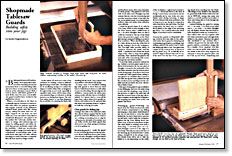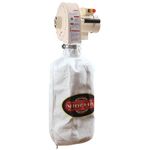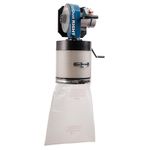
Synopsis: Sandor Nagyszalanczy advocates designing safer tablesaw jigs and setups by adding guards and safety devices that prevent accidental contact with the sawblade. He shares some of his solutions for making common tablesaw jigs and setups: clear guards for sliding jigs, two resawing guards, and a hold-down cove-cutting guard.
“Blade guard removed for photo clarity.” How many times have you been watching a home-improvement show or woodworking video and seen those words appear across the bottom of the television screen? Well, I want to know: what blade guard? In almost all the cases I’ve seen, a stock tablesaw guard wouldn’t have worked in the applications shown.
What’s a woodworker to do? Must we continually expose ourselves to unreasonable risks when we perform operations that require removal of the tablesaw’s standard blade guard—jobs like sawing tenons, cutting box joints and cove cutting? I suppose we can hope our luck holds out, or we can wait for some kind of sensational all-purpose saw guard to hit the market. But I advocate another alternative: to design safer tablesaw jigs and setups by adding guards and safety devices that prevent accidental contact with the sawblade. I think any woodworker bright enough to design innovative jigs for complicated woodworking tasks could make those same jigs a lot safer without investing too much extra time or material. After all, how much is a finger worth?
In this article, I’ll show you some of my solutions for making common tablesaw jigs and setups much safer. One thing I aim for in modifying my jigs is to reduce the degree to which safety relies on judgment. It’s a given that, as you work, especially at repetitive tasks, there will be times when your attention flags or is diverted. A safe jig protects you during these lapses. The very best safety feature is one that eliminates the possibility of contacting the blade with anything but the stock. I try to get as close as possible to this ideal in all my jigs.
In many cases, I’ve retrofitted existing jigs with guards to show that you don’t have to build all new devices to add safety to your woodworking. Because jigs are, by definition, custom-made, the safety measures you take will also have to be individualized. So I haven’t tried to cover all the bases here, only to share a few specific solutions and underscore the general idea that safety and guarding features ought to be built into every jig you make.
From Fine Woodworking #104
Fine Woodworking Recommended Products

Shop Fox W1826

DeWalt 735X Planer

Rockler Dust Right 650 CFM






















Log in or create an account to post a comment.
Sign up Log in